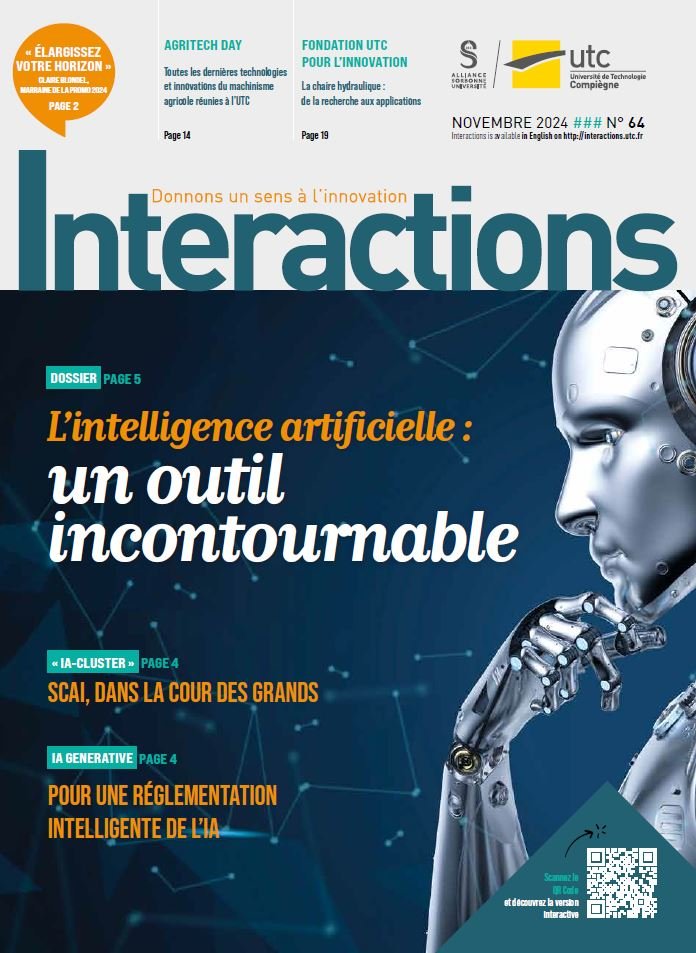Environmental issues and industry

Prof. Jérôme Favergeon, Director of UTC’s Roberval laboratory since 2015, describes the research projects linked to environmental issues.
80% of Roberval’s activities are carried out in collaboration with industry, and there are some links here that go back a long way. “Within the laboratory, we place a longstanding focus on mechanical engineering. We have been working for over 20 years to lighten structures, particularly in the transport equipment, aeronautics and automotive sectors, viz., structures do not compromise safety, but do reduce fuel consumption over the same distance, and so cut CO2 emissions considerably. This is excellent for the environment per se, even if, historically, it was not the reduction in CO2 emissions that motivated manufacturers but rather the reduction in fuel costs, a strong incentive for consumers. Of course, things have changed since then, and the environmental issue has become crucial for companies,” underlines Jérôme Favergeon.
Fusemetal
What are Fusemétal’s areas of research? “We have two main areas of research. The first is additive manufacturing techniques, considered to be among the leading technologies for reducing the ecological footprint of manufacturing processes. The second concerns the assembly of high yield strength sheet metal. For many years now, ArcelorMittal has been developing high-strength sheet metal for vehicle structures, mainly for the automotive sector. This performance makes it possible to slim down various components. On the other hand, these newgeneration steels are more complicated to assemble. If we want to optimise weight, we need to be able to assemble different steels, putting the right steel in the right place, for example. Today, this represents a kind of technological bottleneck in terms of applications, one that needs to be resolved and to which we are providing an academic perspective through this joint laboratory. It’s also worth noting that these steels come from recycling channels”, explains Jérôme Favergeon.
Recycling composite materials
While the collaboration with ArcelorMittal goes back a long way, there is a an equally strong with Safran in the aerospace sector. “The work carried out by the Roberval Lab with Safran mainly concerns composite materials, where new performance parameters can replace certain metal alloys, making structures lighter and thereby reducing aircraft kerosene consumption. This also is good for the environment. However, a major issue is the recycling of these materials, since the material itself is mixed with the structure being manufactured. As a result, we need to move away from traditional recycling methods, such as those we use for metal alloys. This should be a key subject of future projects”, says Jérôme Favergeon.
Other areas of research, in addition to projects carried out in collaboration with mechanical engineering manufacturers, include:
Asian hornet detection
“We have some rather atypical projects, particularly in the ‘acoustics and vibrations’ team. The team is working on the development of acoustic antennae that would make it possible to recognise Asian hornets, which, as its full name (Vespa velutina), also known as the yellow-legged hornet suggests, comes from elsewhere and harms local ecosystems, particularly bees. The technological idea is to install these listening systems on drones so as to detect the hornets more easily, and possibly track their movements in order to find their nests and destroy them,” he says.
Ongoing projects are not stopping the Roberval Lab research teams from looking to the future. They are working on their roadmaps and are particularly interested in two major areas: the reuse of materials and eco-design.
Reusing materials
In this field, we are witnessing the development of concepts, skills and knowledge, as well as tools. However, these tools remain incomplete. “Today, we can certainly find software to help with the eco-design of products, but it essentially integrates issues relating to the upstream stages of the product — which materials, ores or recycled materials, what type of assembly? – but also downstream — recycling or not, reclaiming or not — each stage having a CO2 emission impact. I can therefore calculate the carbon footprint of the finished product by adding up the carbon footprint of each stage. However, they have one limitation: they don’t look at what happens in between, i.e.; the product’s lifespan. We believe that the real impact of a product is not just its design, manufacture and recycling, but also what happens during the entire period of use. Let’s take two products with the same functions but different carbon footprints. If one has a greater impact upstream and downstream but lasts 30 years while the other lasts 10 years, which one should we choose? Today, we don’t know how to carry out this overall assessment using existing tools. Developing new tools that can integrate the entire life cycle from the design stage is therefore a major challenge, particularly for manufacturers,” he concludes.




